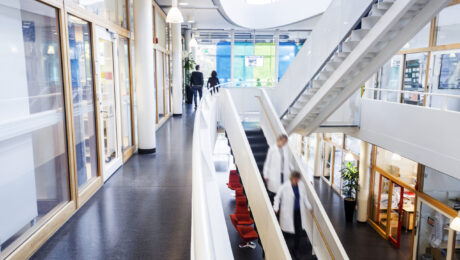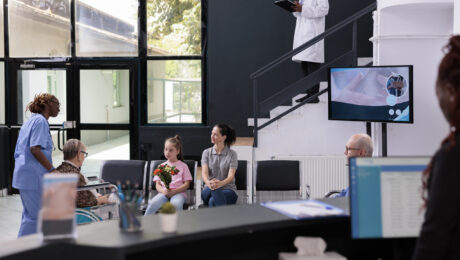Revolutionizing Cleanliness: The Latest Technology in the Janitorial Industry

The janitorial industry is often overlooked when we talk about technological advancements. However, the sector is undergoing a significant transformation, with innovations aimed at improving efficiency, sustainability, and hygiene. From autonomous cleaning robots to eco-friendly cleaning solutions, let’s explore the latest technologies shaping the future of janitorial services.
1. Autonomous Cleaning Robots
Gone are the days when cleaning was solely reliant on manual labor. Enter the era of autonomous cleaning robots, which are now a common sight in airports, malls, and large office spaces. These robots, equipped with sensors and AI algorithms, can navigate complex environments, avoid obstacles, and perform tasks like vacuuming, mopping, and disinfecting surfaces without human intervention. Brands like Avidbots and Brain Corp are leading the way, offering robots that can operate independently, ensuring a consistent level of cleanliness with less human effort.
2. Electrostatic Sprayers
In the wake of the global health crisis, disinfection has become a top priority for businesses and public spaces. Electrostatic sprayers have emerged as a game-changer, allowing janitors to disinfect large areas quickly and effectively. These devices charge disinfectants as they pass through the nozzle, causing the droplets to cling to surfaces for a more thorough clean. This technology ensures that hard-to-reach places and irregular surfaces are properly disinfected, making environments safer for everyone.
3. Eco-Friendly Cleaning Solutions
Sustainability is a hot topic across all industries, and janitorial services are no exception. The latest trend is the shift towards eco-friendly cleaning solutions, which are not only safe for the environment but also for the people who come into contact with them. Companies are now producing biodegradable, non-toxic cleaners that deliver effective cleaning without the harsh chemicals. This move towards green cleaning practices is not only better for the planet but also aligns with the growing consumer demand for sustainable and responsible business practices.
4. IoT-Enabled Cleaning Equipment
The Internet of Things (IoT) is making its way into the janitorial industry, with smart cleaning equipment that can report on their own maintenance needs and usage patterns. For example, smart vacuum cleaners can alert managers when they require servicing or when their dust bags are full. This connectivity ensures that equipment is always in top condition, reducing downtime and improving cleaning efficiency. Moreover, IoT devices can track cleaning frequencies and patterns, helping to optimize the cleaning schedule based on actual usage data.
5. Augmented Reality (AR) for Training
Training in the janitorial industry is getting a high-tech upgrade with the use of augmented reality (AR). AR can simulate various cleaning scenarios, from dealing with hazardous spills to mastering the use of new equipment, providing a hands-on learning experience without the risks. This technology not only makes training more engaging and effective but also ensures that cleaning staff are well-prepared for a variety of challenges they might face in their work.
Conclusion
The janitorial industry is stepping into the future, embracing technologies that promise to make cleaning more efficient, sustainable, and effective. These innovations not only improve the quality of cleaning services but also contribute to the well-being of both the environment and the people in it. As we move forward, it’s clear that technology will continue to play a pivotal role in shaping the future of the janitorial industry.
- Published in Industry News, Sustainability Practices
Eco-Friendly Cleaning Tips for Property Managers: A Guide to Sustainable Practices
As a new property manager, incorporating sustainable cleaning practices into your office management routine is not just beneficial for the environment—it’s also a powerful way to enhance your property’s appeal, ensure the health of your tenants, and potentially reduce maintenance costs. This guide provides practical tips on adopting eco-friendly cleaning methods that align with the latest sustainability trends in property management.
Understanding the Importance of Green Cleaning
Before diving into the practices, it’s crucial to understand why eco-friendly cleaning is important. Sustainable cleaning practices reduce the use of harmful chemicals, lessen environmental impact, and promote a healthier workplace. By implementing these practices, property managers can contribute to a greener planet while fostering a safe and pleasant environment for employees and tenants.
Top Sustainable Cleaning Practices for Your Office
1. Choose Eco-Friendly Cleaning Products
Transition to cleaning products that have a lower environmental impact. Look for products certified by reputable environmental organizations. These products are designed to be effective while minimizing harm to the environment and human health.
2. Implement Green Cleaning Procedures
Adopt cleaning methods that reduce waste and conserve resources. This can include using microfiber cloths instead of disposable paper towels, employing efficient cleaning equipment that uses less water and energy, and adopting cleaning schedules that maximize efficiency and reduce the need for frequent deep cleans.
3. Educate Your Cleaning Staff
Training your cleaning staff on sustainable practices is key. Ensure they understand the importance of using eco-friendly products, following green cleaning procedures, and adopting best practices that support sustainability goals.
4. Reduce, Reuse, Recycle
Apply the principles of reducing, reusing, and recycling in your cleaning operations. Encourage the use of reusable bottles for cleaning products, properly recycle cleaning product containers, and reduce the use of disposable items wherever possible.
5. Embrace Technological Innovations
Stay informed about the latest in cleaning technology. Innovations such as autonomous cleaning robots, environmentally friendly cleaning appliances, and advanced cleaning systems can offer more sustainable options by reducing water and energy use and improving cleaning efficiency.
Conclusion: The Path to a Greener Future
Keywords: Sustainable Property Management, Eco-Friendly Office Cleaning
Adopting sustainable cleaning practices is a significant step towards greener property management. By choosing eco-friendly products, implementing green procedures, educating staff, and embracing technology, property managers can lead the way in environmental stewardship while maintaining clean and healthy office environments.
Remember, the journey to sustainability is ongoing. Continually seek out new practices, products, and technologies that can help reduce your environmental impact. Your efforts in sustainable cleaning will not only contribute to a healthier planet but also to the well-being of your tenants and the overall success of your property management business.
- Published in Sustainability Practices
Essential Cleaning Tips for Commercial Property Owners
Owning commercial property comes with its set of responsibilities, one of the most important being maintenance and cleaning. A well-maintained property not only attracts more tenants and customers but also maintains or increases its value over time. Here are some essential cleaning tips for commercial property owners to keep their properties in top shape.
1. Establish a Regular Cleaning Schedule
Consistency is key when it comes to maintaining the cleanliness of your commercial property. Depending on the type of property you own (office building, retail space, industrial site, etc.), the cleaning needs will vary. However, all commercial spaces benefit from a regular cleaning schedule. This includes daily, weekly, and monthly cleaning tasks such as trash removal, vacuuming, bathroom maintenance, and deep cleaning of high-traffic areas.
2. Focus on High-Traffic Areas
High-traffic areas such as lobbies, hallways, and restrooms require special attention because they accumulate dirt and debris faster than other areas. Regularly cleaning these areas prevents the buildup of grime and ensures a positive first impression for visitors and tenants alike. Consider implementing matting systems to reduce the amount of dirt tracked into the building and placing hand sanitizing stations in key locations to promote hygiene.
3. Don’t Overlook Less Visible Areas
While it’s important to focus on high-traffic areas, don’t neglect less visible spaces such as storerooms, basements, and utility closets. These areas can become breeding grounds for pests and mold if not properly maintained. Regular inspections and cleanings of these spaces can prevent potential health hazards and costly repairs down the line.
4. Use Eco-Friendly Cleaning Products
The shift towards sustainability is affecting all areas of business, including cleaning practices. Using eco-friendly cleaning products is not only better for the environment but also safer for your tenants and visitors, especially those with allergies or sensitivities to harsh chemicals. Additionally, promoting your use of green cleaning practices can be a selling point for potential tenants who prioritize sustainability.
5. Invest in Professional Cleaning Services
While some cleaning tasks can be handled in-house, investing in professional cleaning services for more specialized or labor-intensive tasks can be worthwhile. Professional cleaners have the expertise, equipment, and products necessary to perform deep cleaning, carpet cleaning, window washing, and other specialized services at a standard that may be difficult to achieve otherwise. Regular professional cleaning can extend the life of your property’s fixtures and finishes, ultimately saving money in the long run.
6. Stay Proactive About Maintenance
A clean commercial property is not just about aesthetics; it’s also about maintenance. Regularly inspecting your property for maintenance issues such as leaks, cracks, and wear and tear can prevent minor problems from becoming major ones. Addressing these issues promptly can prevent them from causing damage that is more difficult and expensive to clean or repair later.
7. Encourage Tenant Participation
Finally, encourage your tenants to participate in maintaining the cleanliness of the property. After all, it’s in their best interest to keep their leased space clean and well-maintained. Providing tenants with guidelines on cleanliness standards and encouraging good practices such as recycling can foster a sense of community responsibility towards the property.
By following these essential cleaning tips, commercial property owners can maintain their properties in pristine condition, ensuring the satisfaction of their tenants and the longevity of their investment. Remember, a clean property is not only more appealing but also more functional and valuable in the long run.
- Published in Logistic



